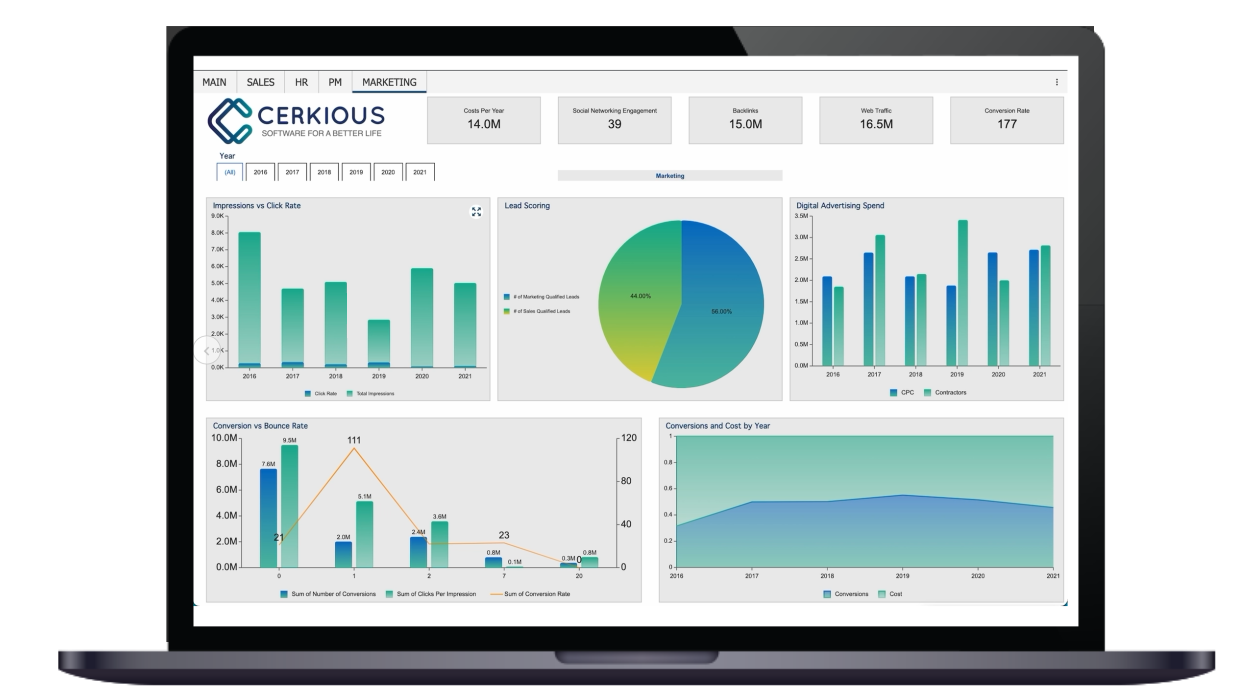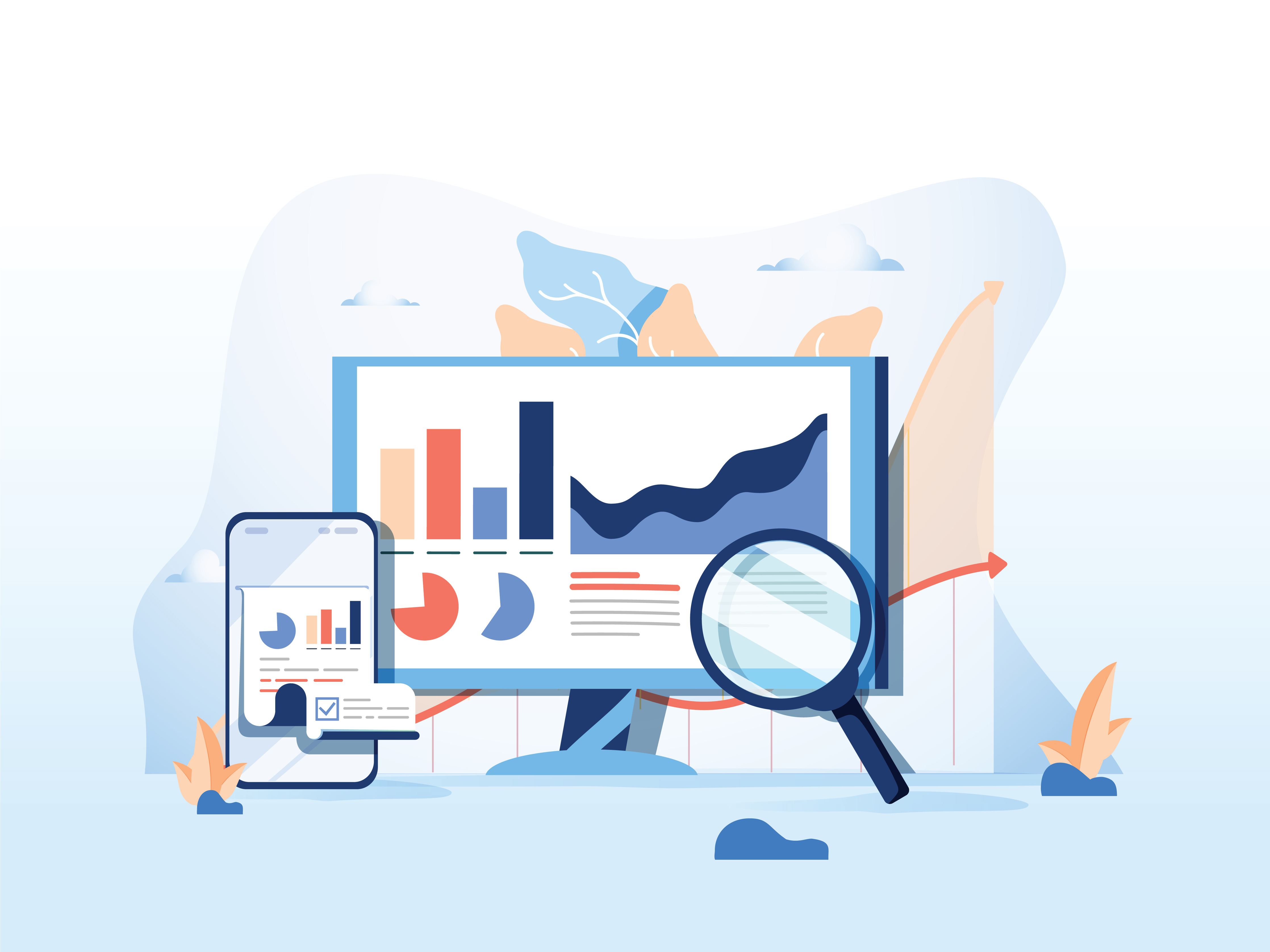As business intelligence (BI) continues to play an integral role in the decisions of enterprises across all industries, it is important to understand BI essentials. Business intelligence is a modern, technology-driven approach to analyzing data and using it to inform critical decisions in both short-term and long-term operations. Here, we'll investigate Business Intelligence’s most important visualization method: dashboarding.
In this article, we'll cover what a BI dashboard is, how a BI dashboard can be used, the industries that can benefit from BI dashboards, how your organization can benefit from BI dashboards, and other things to consider when creating and consuming BI dashboards.
Before delving into the details of BI dashboards, it's important to understand the fundamentals of dashboarding.
- What is a BI dashboard?
- Who creates BI dashboards?
- What is the purpose of a BI dashboard?
What is a BI Dashboard?
A BI dashboard is an interactive visualization method for displaying different types of data for business operations on various scales. The types of data typically found in BI dashboards are analytics metrics, key performance indicators (KPIs), and other data points that play a role in decision-making.
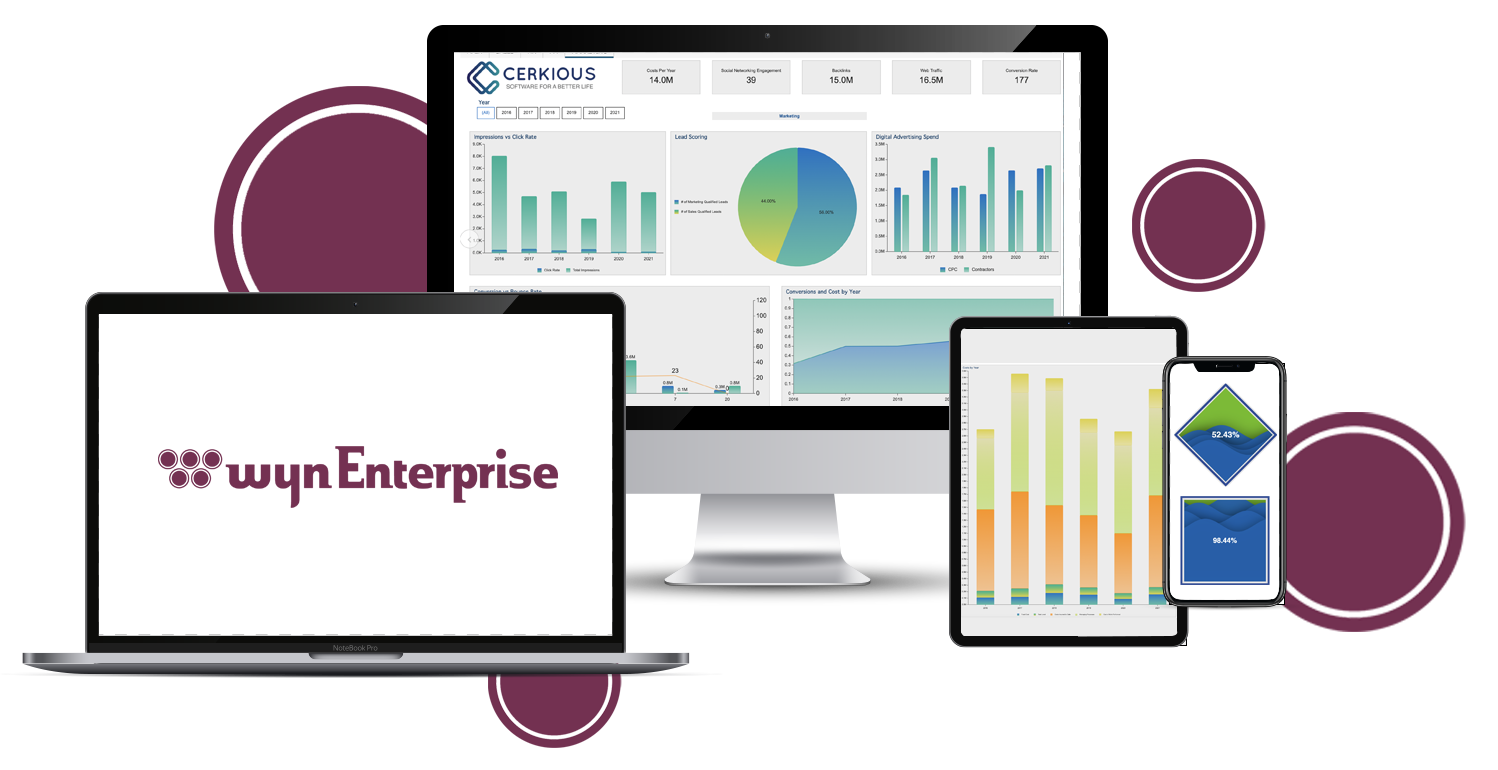
Examples of Data Types Found in BI Dashboards
- Analytics metrics: How many customers did we lose/gain this year? What two products were most often bought together? How long was the typical evaluation time per product?
- KPIs: Growth in Revenue, Net Profit Margin, Gross Profit Margin, Operational Cash Flow, Inventory Turnover
- Miscellaneous: What time of day do customers most often purchase this product? What is the average age of the customer?
BI dashboards can contain an abundance of data types, but all BI dashboards should present actionable data to inform business decisions - this alone is what defines a dashboard as a business intelligence dashboard.
Why Use a BI Dashboard?
We’ve covered what type of information BI dashboards can provide - KPIs, business analytics metrics, and other key data points to help make informed, data-driven decisions. You may be asking yourself, “Why can’t I present this information in a report? Why a dashboard?”
If you’re asking something along these lines, don’t worry. It is a common misconception that a dashboard and a report are the same.
Dashboards vs. Reports
Here is a basic explanation of the difference:
- Dashboards are generally summary-focused. Reports generally data-focused.
- Dashboards are more visual and use various data visualization components. Reports are generally more tabular.
- Dashboards focus on analytical metrics and KPIs. Reports focus on the data behind these metrics.
- Dashboards can be understood with a brief overview. Reports typically require more in-depth analysis.
- Dashboards are generally consumed on the web and provide high interactivity. Reports can be consumed on paper or on the web and provide little interactivity.
The most important thing to remember is that while reports and dashboards provide different functionalities and have different use-cases, there are scenarios where a report and dashboard could be interchangeable. In situations like that, it's a matter of your own personal preference.
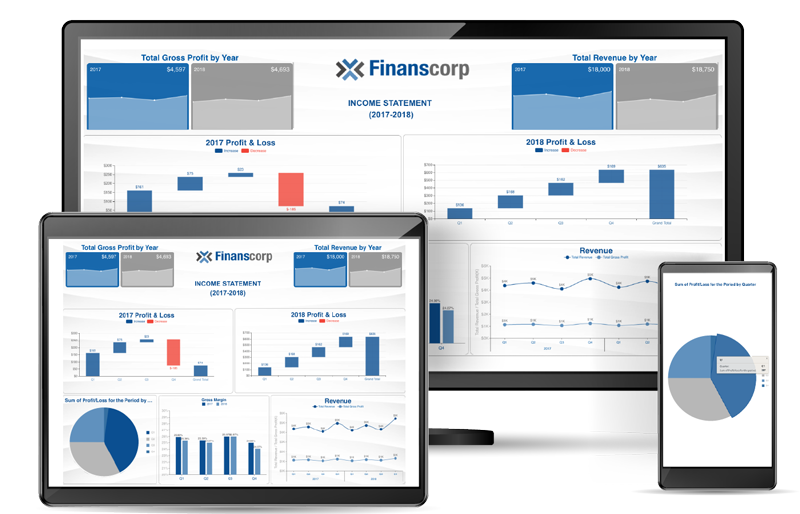
Business Intelligence Dashboard -Income Statement Dashboard
Who Should Create BI Dashboards?
One of the best things about BI dashboarding is that it is very accessible to all end-users, regardless of technical capability and knowledge. BI dashboards can be created by technical developers, or by non-technical business users.
One factor in the creation of dashboards is the dashboard design tool being used; the simpler the tool, the more accessible it is for end-users to create meaningful and informative BI dashboards.
Some factors that could make a dashboard design tool more difficult to use for business end-users could be a complicated UI (a messy layout and unclear design process), or an excessive feature set (a dashboard designer that has many unused or unclear features).
BI dashboards should be able to be created by even the most non-tech savvy end-user, which makes an intuitive, easy-to-use dashboard creation tool even more important.
How Are BI Dashboards Used?
BI dashboards can be used to convey all kinds of data to help drive the organization's overall success through influencing decisions.
Here is the 'life-cycle' of a BI dashboard.
Need for Dashboard/BI Project Established
This is the inception of the need for BI dashboarding. Typically, someone in the organization will indicate the need for at-a-glance data visualization to help monitor business performance and inform business decisions.
Requirements for a BI dashboarding solution may include things like an easy-to-use designer, specific data connectors (such as MySQL or MongoDB), multi-tenant deployment support, or a customizable UI.
Solution Decision
After evaluating one or more business intelligence tools, you decide to choose the one that meets your requirements and fits your budget. This stage is when you would integrate the BI solution within your existing application or set it up as a stand-alone utility.
This could involve setting up your security provider for data governance, configuring user permissions, and other aspects of embedding a BI tool into your existing environment.
Additionally, you would set up data providers, data sets, and row-level security to only see the data they should access.
Dashboard Creation
Now that you have integrated a BI solution into your existing solution, set up data providers, and limited the data to each respective tenant, you and/or your end-users can get started with creating their first dashboard.
Traditional dashboards will typically be comprised of a multitude of data visualization components, such as Bar, Column, Pie, Doughnut, Area, Line, Tree, and Radar charts. Naturally, different BI tools will have different data visualization options- make sure the tool you choose has the charts you need!
Dashboard Consumption
Now that you or your end-users have created a BI dashboard, it is ready to be utilized. There is a dedicated view mode for the dashboards in most business intelligence tools, where end-users will look at the dashboard and interact with the data visualization components.
End-users will typically log into a web portal of some kind to view their dashboard(s). More specifically, they can manipulate the dashboard's charts to slice-and-dice the data in order to gather as much information as possible.
This is a key characteristic that distinguishes BI dashboards from BI reports.
When a dashboard is manipulated, it allows the end-user to retrieve the information they need to stay informed on business operations, report on business performance, or make data-driven decisions to further advance the organization's success.
The above 'dashboard life cycle' is a simple use case. Depending on your organizational structure, industry, and preferences, a BI dashboarding project, solution, and subsequent dashboards may have a different type of life cycle(s).
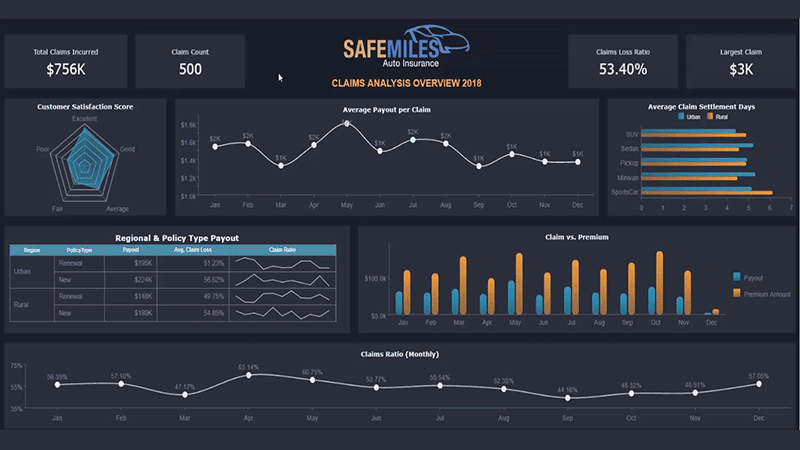
Business Intelligence Dashboard - Insurance Claims Dashboard
BI Dashboards - Key Takeaways:
- Usually web-based (whether on desktop, laptop, tablet, mobile phone, etc.)
- Interactive- users can manipulate the dashboard to better reflect the ‘story’ behind the data
- Summarized data- KPIs, metrics, charts, etc. No lengthy tables, or extensive data reporting
Benefits of BI Dashboards and Other Considerations
Business intelligence dashboards provide countless benefits to different roles in many different industries.
For example, effective data visualization improves manufacturing processes by assessing the profit contribution of individual segments, product lines, and customers through the information that reveals the overall margin spread.
Insurance dashboards provide underwriting loss assessments, fraud analysis, and much more.
BI dashboards prove valuable in many areas to end-users of all types. Technical dashboard consumers can work with the data behind the dashboard to generate custom queries or filter the data from the data level.
On the other hand, non-technical users can interact with the dashboard itself by filtering the visualization components on the dashboard level.
Regardless of technical skill, all dashboard end-users can stay in the know with up-to-date data, analytical metrics, KPIs, and other valuable data points presented by BI dashboards.
BI dashboards can be used to monitor business performance by providing top-level summary data, such as daily, monthly, and yearly sales, top-selling products, or the best-performing store.
Dashboards can also be used to discover viable business opportunities by performing basket analyses on sales data, capitalizing on qualitative successes, identifying weak points in a sales cycle, or identifying key success factors.
One of the greatest aspects of dashboarding is the flexibility of where you view it. Whether on a desktop, laptop, smartphone, or another device, a dashboard viewer should feature responsive visualization; that is, being able to adjust according to the platform it is rendered on.
If you create a dashboard on your laptop, you want the dashboard end-user viewing on their mobile device to see the same dashboard you created!
Luckily, most modern BI tools will have this functionality.
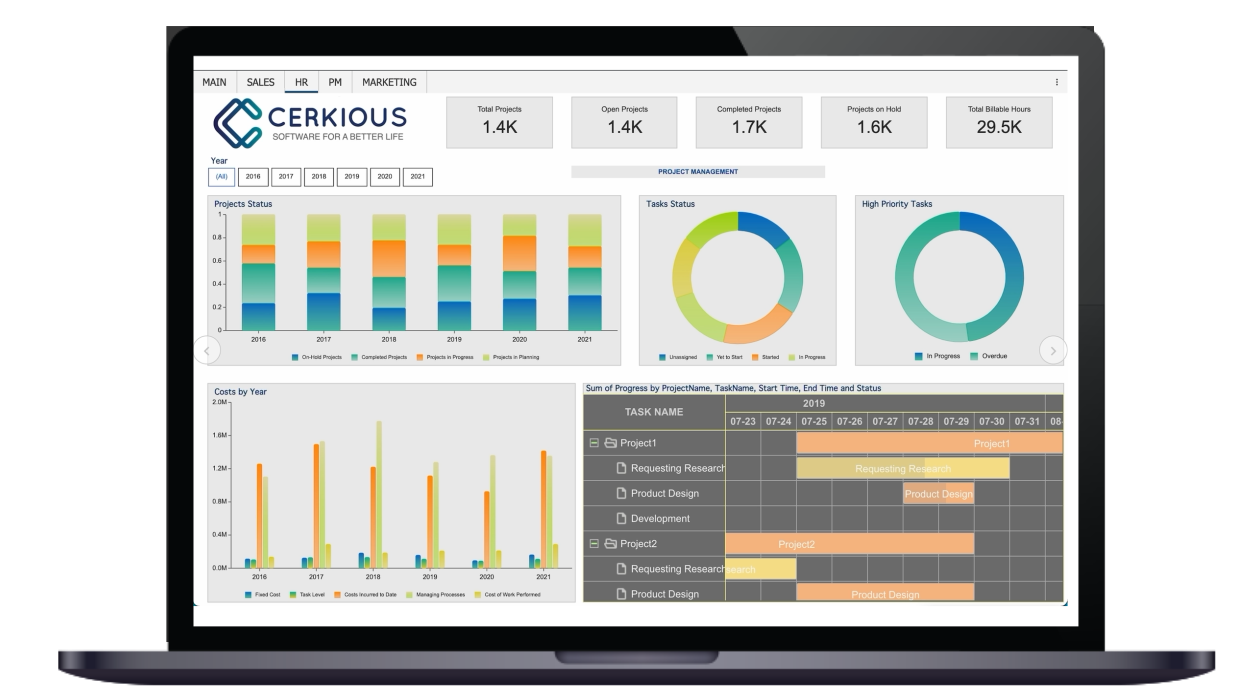
Business Intelligence Project Management Dashboard
Reasons Why You Should Use BI Dashboards:
- Monitor business performance
- Highlight key data points (KPIs)
- Identify opportunities
- Discover the story behind the data
- Make data-driven informed decisions
- Enables the use of embedded self-service BI applications by industry analysts
As you’ve been reading, you may have wondered whether BI dashboards can be beneficial to your organization specifically. Regardless of what industry you belong in, the answer is a resounding yes!
BI dashboards can be beneficial to all organizations.
The benefits that BI dashboards provide can be applied to organizations in finance, retail, manufacturing, technology (SaaS, IT, etc.), insurance, healthcare, education, government, and more.
Learn how to create a BI dashboard in under 5 minutes.
By now, you should have a complete understanding of what a BI dashboard is, how you can utilize them, and, most importantly, why you should use them.
While BI dashboards provide many benefits, it is up to you to find the perfect solution for your dashboarding requirements. Data is king in today’s world, but we can take full advantage of it with modern technology using business intelligence dashboards.





























